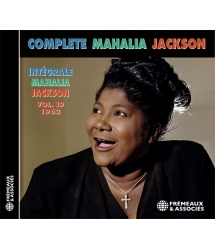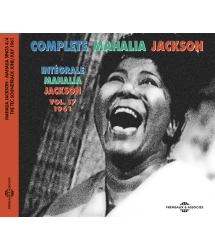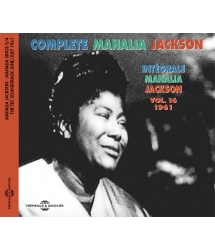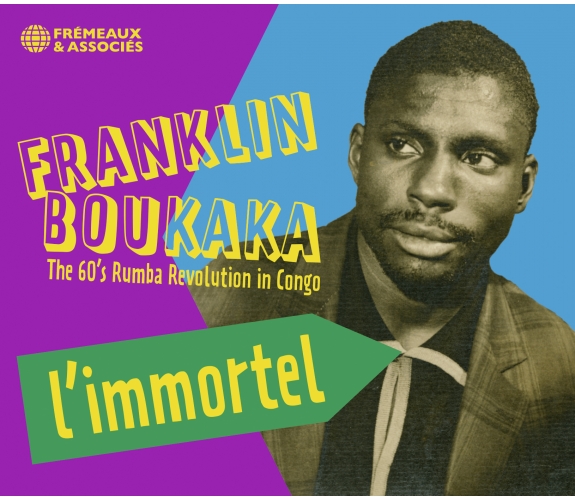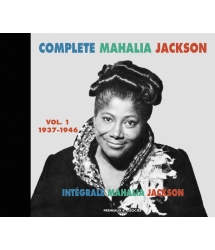- Our Catalog
- Philosophy
- Philosophers of the 20th century and today
- History of Philosophy (PUF)
- Counter-History and Brief Encyclopedia by Michel Onfray
- The philosophical work explained by Luc Ferry
- Ancient thought
- Thinkers of yesterday as seen by the philosophers of today
- Historical philosophical texts interpreted by great actors
- History
- Books (in French)
- Social science
- Historical words
- Audiobooks & Literature
- Our Catalog
- Jazz
- Blues
- Rock - Country - Cajun
- French song
- World music
- Africa
- France
- Québec / Canada
- Hawaï
- West Indies
- Caribbean
- Cuba & Afro-cubain
- Mexico
- South America
- Tango
- Brazil
- Tzigane / Gypsy
- Fado / Portugal
- Flamenco / Spain
- Yiddish / Israel
- China
- Tibet / Nepal
- Asia
- Indian Ocean / Madagascar
- Japan
- Indonesia
- Oceania
- India
- Bangladesh
- USSR / Communist songs
- World music / Miscellaneous
- Classical music
- Composers - Movie Soundtracks
- Sounds of nature
- Our Catalog
- Youth
- Philosophy
- News
- How to order ?
- Receive the catalog
- Manifesto
- Dictionnary











- Our Catalog
- Philosophy
- Philosophers of the 20th century and today
- History of Philosophy (PUF)
- Counter-History and Brief Encyclopedia by Michel Onfray
- The philosophical work explained by Luc Ferry
- Ancient thought
- Thinkers of yesterday as seen by the philosophers of today
- Historical philosophical texts interpreted by great actors
- History
- Books (in French)
- Social science
- Historical words
- Audiobooks & Literature
- Our Catalog
- Jazz
- Blues
- Rock - Country - Cajun
- French song
- World music
- Africa
- France
- Québec / Canada
- Hawaï
- West Indies
- Caribbean
- Cuba & Afro-cubain
- Mexico
- South America
- Tango
- Brazil
- Tzigane / Gypsy
- Fado / Portugal
- Flamenco / Spain
- Yiddish / Israel
- China
- Tibet / Nepal
- Asia
- Indian Ocean / Madagascar
- Japan
- Indonesia
- Oceania
- India
- Bangladesh
- USSR / Communist songs
- World music / Miscellaneous
- Classical music
- Composers - Movie Soundtracks
- Sounds of nature
- Our Catalog
- Youth
- Philosophy
- News
- How to order ?
- Receive the catalog
- Manifesto
- Dictionnary
MAHALIA JACKSON
Ref.: FA1328
Artistic Direction : JEAN BUZELIN
Label : Frémeaux & Associés
Total duration of the pack : 1 hours 2 minutes
Nbre. CD : 1
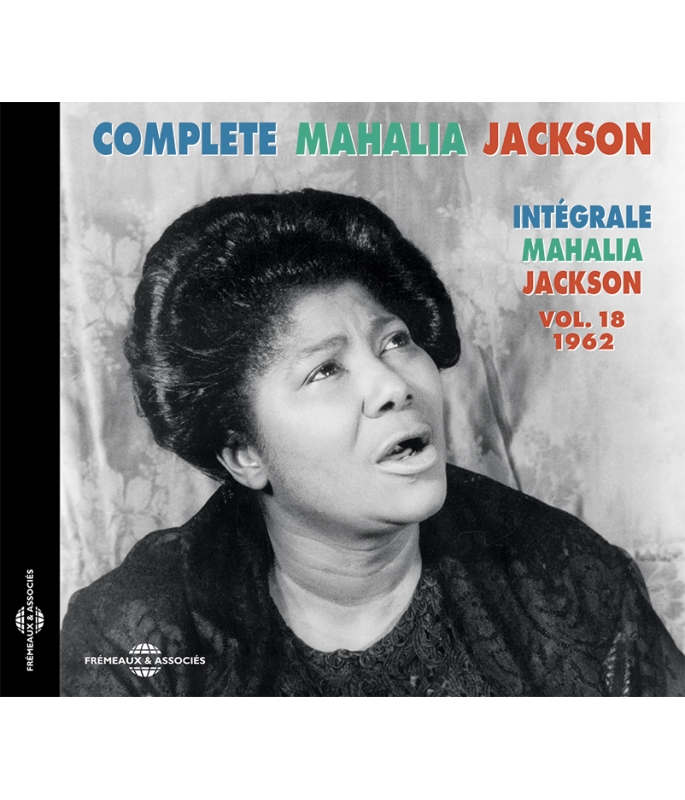
This new album of Mahalia Jackson does not include any Gospel Songs but songs of love and faith made sublime by the magni- cent interpretation of the greatest American vocalist of the 20th century.
The complete Mahalia Jackson recordings (presented chronologically as in the Sister Rosetta Tharpe series) reveal a personality who will remain one of the greatest-ever Gospel artists, a singer who lled 20th century Afro-American culture with inspiration. The source of this vital music is the collection of Jean Buzelin, the author of this anthology, together with the aid of collectors of Mahalia Jackson’s work; all these recordings have been restored with the best analog transfers and most sophisticated technology available, to avoid any alteration of the original sound. Patrick FRÉMEAUX & Claude COLOMBINI
-
PisteTitleMain artistAutorDurationRegistered in
-
1Whither Thou Goest I Will GoMahalia JacksonG. Singer00:02:341962
-
2My TaskMahalia JacksonE. Ashford00:04:111962
-
3I'Ve Done My WorkMahalia JacksonCaldwell00:04:531962
-
4The RosaryMahalia JacksonNevin00:03:021962
-
5A Perfect DayMahalia JacksonC. Jacobs Bond00:04:231962
-
6BecauseMahalia JacksonE. Teschemacher00:03:091962
-
7TreesMahalia JacksonO. Rabasch00:03:101962
-
8My FriendMahalia JacksonE. Drake00:02:521962
-
9The House I Live InMahalia JacksonE. Robinson00:04:451962
-
10Danny BoyMahalia JacksonE. Weatherly Fre00:03:141962
-
11The Green Leaves Of SummerMahalia JacksonDimitri Tiomkin00:03:371962
-
12Crying In The ChapelMahalia JacksonA. Glenn00:03:481962
-
13Sign Of The JudgementMahalia JacksonTraditionnel00:02:161962
-
14That's All RightMahalia JacksonE. Booker00:04:061962
-
15Speak Lord JesusMahalia JacksonS. Martin00:04:071962
-
16In Times Like TheseMahalia JacksonR.C. Jones00:05:001962
-
17He Is Beside MeMahalia JacksonE. Crawford00:03:051962
CLICK TO DOWNLOAD THE BOOKLET
FA1328 Mahalia vol.18
COMPLETE MAHALIA JACKSON
INTÉGRALE
MAHALIA
JACKSON
VOL. 18
1962
INTÉGRALE MAHALIA JACKSON - VOL. 18 – 1962
Par Jean Buzelin
A l’aube des années 60, Mahalia Jackson est devenue une immense vedette, une artiste à la renommée considérable, une personnalité du « gotha » américain. Elle est donc abondamment sollicitée, réclamée, honorée… Invitée, en janvier 1961, à l’investiture de John F. Kennedy – elle y chante le Star Spangled Banner – elle y répond d’autant plus volontiers qu’elle met beaucoup d’espoir en ce jeune président en ce qui concerne les luttes contre la ségrégation, le racisme et pour les droits civiques.
Plus tard dans l’année, après sa triomphale tournée en Europe et au Moyen-Orient, et l’enregistrement de ses chansons filmées pour la télévision qui ont fait l’objet de nos quatre précédents volumes1, elle participe, en compagnie de Sammy Davis Jr et du jeune comédien Dick Gregory, à une opération en faveur de la SCLC (Southern Christian Leadership Conference), fondée en janvier 1957 par Martin Luther King Jr dans sa lutte pour les droits civiques selon le principe de la non-violence.
Les concerts se suivent et se succèdent, dans les stadiums et autres grandes salles, comme dans les églises et les campus, et même dans les prisons. Il n’est pas dans notre propos, et cela sortirait largement du cadre de nos livrets, de détailler les multiples aventures et anecdotes que recueille et énumère notamment Laurraine Goreau, la biographe « autorisée » de la chanteuse. Relevons simplement quelques faits notables ou intéressants. Ainsi, tandis que son ancienne productrice, Bess Berman, profite de la popularité croissante de la chanteuse après sa tournée européenne pour rééditer en albums ses anciens disques Apollo, Mahalia participe à une grosse production télévisée à Hollywood, “The Sound of the ‘60s”, animée par la baguette du chef André Prévin – elle y chante Bless This House. Régulièrement invitée par son amie Dinah Shore, la chanteuse est d’autant plus présente sur le petit écran que les 82 petits clips de la série “Mahalia Jackson Sings” sont diffusés sur la chaîne WBKB de Chicago, à raison de trois séquences de cinq minutes quotidiennes. Elle décide d’aller fêter Thanksgiving2 à Atlanta avec « l’homme le plus merveilleux du monde », Martin Luther King, puis d’aller passer les fêtes de Noël à la Nouvelle-Orléans dans le berceau familial. La chanteuse se rend également à la Cathedral of Tomorrow, érigée en 1958 à Cuyahoga Falls par le révérend Rex Humbard. Mahalia et l’acteur-chanteur-guitariste de country gospel Stuart Hamblen3 en sont les hôtes d’honneur, le chanteur déclarant : « vous êtes une légende vivante, Mahalia ». Celle-ci va chanter pendant deux heures.
L’année 1962 commence par plusieurs émissions de télévision à Hollywood, suivies d’un concert à Oakland le 30 janvier. La National Academy of Recording Arts and Sciences (qui vient d’ouvrir une catégorie Gospel) décerne à Mahalia Jackson son premier Grammy.
Une nouvelle séance d’enregistrement est alors programmée par son producteur Irving Townsend, la première en studio pour Columbia (mis à part la série TV) depuis le mois de mars 1961, avant son départ pour l’Europe4. Pour ce faire, il fait à nouveau appel à Johnny Williams pour les orchestrations. Décidément, le futur partenaire de Steven Spielberg a le vent en poupe. Les enregistrements vont se dérouler à Los Angeles sur deux jours, les 16 et 17 mars. Douze chansons sont enregistrées, lesquelles vont constituer l’album “Great Songs of Love and Faith”, délibérément destiné à un large public blanc, ou noir parmi les classes les plus aisées.
« No Gospel Songs on New Mahalia Jackson Album », annonce la promotion. Mahalia a-t-elle effectué un changement de cap ? Face à la presse, elle se justifie, répondant notamment au critique, producteur et compositeur Leonard Feather qu’on y trouve, certes, des chansons populaires, mais que The Rosary est un chant catholique, que deux belles œuvres de Carrie Jacobs-Bond y figurent, que Because se rapporte au 1er Commandement de l’Évangile, etc.
Le texte de pochette, fort élogieux, considère que cet album marque un nouveau départ pour Mahalia Jackson qui démontre qu’elle peut tout chanter (certains penserons ou espérerons qu’il s’agit plutôt d’une belle parenthèse). À ses chants habituels célébrant l’amour de Dieu, elle y ajoute celui de la campagne, de la nature, et même l’amour romantique. Ainsi la présence de Dieu se manifeste dans Trees (chanson de Joyce Kilmer de 1922 abondamment reprise, tant par des interprètes classiques comme Paul Robeson ou Mario Lanza, que par de nombreux chan-teurs et ensembles de gospel), et dans The Green Leaves of Summer (créée par les Brothers Four dans le film « Alamo » en 1960). Tandis que The House I Live In (immortalisée par Frank Sinatra en 1942) exalte la fierté nationale. Servi par les très beaux arrangements de Johnny Williams, cet enregistrement constitue une preuve tangible à la mesure de la grandeur de la chanteuse, conclut l’auteur du texte5.
Nous présentons ici ce « récital », pourrait-on dire, dans l’ordre chronologique de la session d’enregistrement, et non dans celui adopté sur les deux faces du disque. Whither Thou Goest est une très belle chanson dont les paroles font référence au Livre de Ruth (tiré du Zohar) ; le duo Les Paul & Mary Ford en firent un succès en 1954, prélude à de nombreuses interprétations allant de Bing Crosby à Leonard Cohen (en 2009). Mais elle n’a pas séduit les chanteurs de gospel, pas plus que My Task, publiée à Londres en 1903. I’ve Done My Work et A Perfect Day, prisées par Mahalia Jackson, sont donc deux chansons écrites par Carrie Jabobs-Bond, la première en 1920, la seconde en 1910. Jouée sur le Titanic, cette dernière fut également l’un des airs favoris des soldats américains en Europe durant la 1e Guerre mondiale ; Mahalia l’avait déjà enregistrée l’année précédente pour la série télévisée “Mahalia Jackson Sings”, de même que The Rosary, qui faisait également partie du song book Titanic6. Paul Robeson mit également ces deux chansons à son répertoire. Because est une œuvre de Guy D’Hardelot, pseudonyme de la pianiste et compositeur Helen Guy, née au château d’Hardelot, près de Boulogne-sur-Mer ; enseignante installée à Londres, elle composa cette pièce en 1896 lors d’une tournée aux États-Unis. Perry Como en fit un hit en 1948. Les plus grands interprètes classiques s’y essayèrent, de Caruso à Placindo Domingo, et elle séduisit aussi bien Sarah Vaughan que Sister Rosetta Tharpe. My Friend, œuvre plus récente des auteurs du célèbre I Believe, fut créée par Eddie Fisher en 1954, et reprise notamment par Frankie Laine et par les Roberta Martin Singers. Publiée à Bath en 1910, Danny Boy est une ballade écrite par Fredrick E. Weatherly sur une ancienne mélodie irlandaise ; à force d’être reprise par des chanteurs de tous genres (Mario Lanza, Bing Crosby, Johnny Cash, Sam Cooke, Elvis Presley, Harry Belafonte, les 5 Blind Boys of Alabama, Billy Preston, Tom Jones…), elle est devenue une « rengaine » que seule la qualité de l’interprétation réussit à sauver. On pourrait dire la même chose de Crying In The Chapel, écrite en 1953 par Artie Glenn pour son fils, le chanteur country Darrell Glenn ; les Orioles en firent un tube doo wop avant que Ella Fitzgerald, Elvis Presley, Little Richard, les Platters, Sister Rosetta Tharpe, les Staple Singers… et jusqu’à Bob Marley s’en emparent.
Avec ce répertoire, certes choisi avec soin et magnifiquement chanté avec foi, puissance, majesté et sans grandiloquence, nous nous situons en effet très loin de l’art sacré afro-américain – negro spirituals et gospel songs – mais le statut de Mahalia Jackson et ses exceptionnelles qualités vocales la mettent ipso facto sur le même plan que les stars de la grande variété (pop) américaine. Elle doit donc tenir son rang au sein de ce club huppé du show business, encore qu’il soit permis de supposer qu’elle y émet quelques résistances – souvenons-nous de son refus absolu d’interpréter du jazz – et choisit elle-même les chansons qu’on lui propose, et non qu’on lui impose. D’ailleurs pourquoi l’auditeur lui refuserait ce qu’il accepte avec bonheur lorsque que ce répertoire bénéficie des voix de Bing Crosby, Frank Sinatra, Paul Robeson ou Harry Belafonte ?
Mais, en producteurs avisés, les responsables de la Columbia organisent quelques jours plus tard, le 22 mars à Hollywood une nouvelle séance, moins déroutante pour ses fans et plus prompte à satisfaire son public habituel. La chanteuse lui offre donc un répertoire tout neuf de gospel songs. Un simple quintette instrumental est placé sons la direction de Edward C. Robinson qui, pour l’occasion, tient le piano et non l’orgue comme pour les films-TV – Mildred Falls serait-elle en disgrâce ? - tandis que Shelly Manne, à nouveau présent, partage la batterie avec… Johnny Williams soi-même. S’ajoute un chœur dirigé par le chef afro-américain Thurston Frazier.
Personnage intéressant que ce Thurston Gilbert Frazier, né à Houston en 1930 et qui fit partie de la chorale de la St.Paul Baptist Church Choir de Los Angeles dirigée par le professeur James Earle Hines7. Il prend ensuite, en 1957 en compagnie de la pianiste Gwendolyn Cooper, les commandes des Voices of Hope. Cette mass choir, qui comprend une centaine de chanteurs, réalisa plusieurs disques en 1961 et en 1966. Proche de James Cleveland, Thurston Frazier enregistrera également sous son propre nom en 1962. Considéré comme le plus important chef de chœur californien après J. Earl Hines, Thurston Frazier sera assassiné en 1974 dans des circonstances qui n’ont jamais été élucidées.
L’organiste de la séance, Albert A. Goodson (1933-2003) n’est pas non plus un inconnu. Membre également de la St.Paul Baptist Church, il fut au début des années 50 le pianiste des Sallie Martin Singers, avant de devenir l’organiste du Simmons-Akers Gospel Trio8, un ensemble proche de Mahalia Jackson qu’il accompagne ici pour la première fois ; il sera à nouveau sollicité l’année suivante.
Les onze titres de cette séance seront mis en boîte dans la même journée et rassemblés dans l’album “Make a Joyful Noise Unto the Lord”. Nous en présentons ici une première partie.
Contrastant avec les tempos lents des « Great Songs », le premier titre, Sign Of The Judgement, adaptation originale par Mahalia Jackson elle-même d’un negro spiritual traditionnel, est interprété sur un rythme très enlevé. That’s All Right, qui s’appuie sur un tempo médium-lent bien marqué, avait été « essayé » par la chanteuse pour sa série télévisée9. Speak Lord Jesus, écrit par Sallie Martin pour le grand chanteur Brother Joe May, In Times Like Jesus (1944) qui séduisit entre autres Robert Anderson, Martha Bass, Little Richard et Albertina Walker, et enfin He Is Beside Me, composition récente (1961) de Elizabeth Crawford, sont trois beaux exemples de gospel songs particulièrement inspirés.
La suite de la séance ouvrira le 19e volume de notre intégrale.
Trois semaines plus tard, le 15 avril, Mahalia Jackson participe à l’Ed Sullivan Show, et reçoit la médaille du Mérite que lui décerne la ville de Chicago, la grande métropole où elle a émigré à la fin des années 20 et où elle demeure toujours. Le dimanche après Pâques, elle chante à St-Louis au bénéfice de la NAACP (National Association for the Advancement of Colored People), fondée en 1909 notamment par l’activiste noir W.E.B. DuBois, et toujours forte de l’appui de 300 000 membres.
Cette grande voix, à tous les sens du terme, de l’Amérique noire, continue de se faire entendre sur tous les fronts. Et ce n’est pas fini…
Jean BUZELIN
Jean Buzelin est l’auteur de Negro Spirituals et Gospel Songs, Chants d’espoir et de liberté (Ed. du Layeur/Notre Histoire, Paris 1998) ; il collabore à la Gospel Discography de Cedric J. Hayes & Robert Laughton (rubriques Mahalia Jackson, Sister Rosetta Tharpe, Golden Gate Quartet, etc.).
© FRÉMEAUX & ASSOCIÉS 2018
Notes :
(1) Voir Complete Mahalia Jackson Vol. 14-15-16-17 (FA 1324-25-26-27).
(2) Thanksgiving est la grande fête d’actions de grâce célébrée le 4e jeudi de novembre; on y mange la dinde en famille.
(3) Stuart Hamblen est l’auteur de plusieurs œuvres enregistrées par Mahalia Jackson : It Is No Secret (Vol. 3 & 15),
His Hands (Vol. 5), et You Must Be Born Again (Vol. 10).
(4) Voir Complete Mahalia Jackson Vol. 11 & 12 (FA 1321-22).
(5) Rappelons toutefois que Mahalia avait déjà enregistré un disque dans le même esprit en 1960 : “The Power and The Glory”
avec des arrangements beaucoup plus discutables de Percy Faith ; voir Complete Mahalia Jackson Vol. 10 & 11 (FA 1320-21).
(6) Il est intéressant de comparer ces versions avec orchestre avec les premières accompagnées d’un simple duo piano-orgue ;
voir Complete Mahalia Jackson Vol. 14 & 15 (FA 1324-25).
(7) Voir The Golden Age of Gospel (FA 5246) et le CD J. Earle Hines (Gospel Friend PN-1501).
(8) Chanteuse et amie de Mahalia Jackson, Doris M. Akers est l’auteur de God Spoke To Me (Vol. 3), God Is So Good To Me
(Vol. 7), Trouble (Vol. 8 & 11), Lead On Lord Jesus, He’s A Light Unto My Pathway, Impatient Heart, Life Eternal (Vol. 8),
Lord Don’t Move The Mountain (Vol. 9 & 14), enregistrées par Mahalia.
(9) Voir Complete Mahalia Jackson Vol. 16 (FA 1326).
Ouvrages consultés :
Laurraine Goreau, Mahalia (Lion Pub. UK 1976 - 2e édition)
Mahalia Jackson with Evan McLeod Wylie, Movin’ on up (Hawthorn Books, NY 1966)
Cedric J. Hayes & Robert Laughton, Gospel Discography 1943-1970 (Eyeball Productions Inc., 2007)
Photos & collections : Jean Buzelin, X (D.R.)
COMPLETE MAHALIA JACKSON - VOL. 18 - 1962
By Jean Buzelin
By the early 60s Mahalia Jackson had become a huge star, widely acclaimed as one of the elite. Showered with honors, in January 1961 she was invited to take part in the swearing in ceremony of John F. Kennedy where she sang the Star Spangled Banner. She accepted readily as she really believed that this young president would support the civil rights movement against segregation and racism.
Later in the year, after a triumphant tour in Europe and the Middle East and the TV recordings which were the subject of our three preceding volumes1, alongside Sammy Davis Jr and the young comedian Dick Gregory she took part in a sell-out benefit show in the Sports Arena in Los Angeles, supporting the Southern Christian Leadership Conference, founded in January 1957 by Martin Luther King as part of his non-violent Civil Rights Movement. Numerous other concerts followed, in stadiums, churches halls and university campuses, even in prisons. It is not our aim here to include the numerous anecdotes told around these concerts by Laurraine Goreau in her official biography of the singer. Here is just an outline of events. While her previous producer Bess Berman took advantage of her growing popularity after her European tour to issue albums of her old Apollo recordings, Mahalia appeared in a big TV production in Hollywood “The Sound of the Sixties”, conducted by André Prévin, when she sang Bless This House. Regularly invited by her friend Dinah Shore, she also appeared frequently on the Chicago WBKB channel which broadcast the 82 clips of “Mahalia Jackson Sings” in five minutes segments three times a day. Then she decided so spend Thanksgiving2 in Atlanta with “the most marvelous man in the world”, Dr. Martin Luther King Jr., before spending Christmas at home in New Orleans. On New Year’s Eve she went to her old friend the Rev. Rex Humbard’s church, the beautiful Cathedral of Tomorrow where she and country/gospel singer and guitarists Stuart Hamblen3 were guest of honour. He hugged her declaring “You’re a legend in your time Mahalia. I saw your name on the new Gallup Poll, for Most Admired Woman in the World”. She sang every two hours throughout the night into the small hours. A concert at Oakland on the 30 January followed.
1962 began with several TV broadcasts in Hollywood, followed by a concert at Oakland on the 30 January. The National Academy of Recording Arts and Sciences had just created a Gospel category and awarded Mahalia its first Grammy. So a new studio recording session was set up by her producer Irving Townsend, the first for Columbia (apart from the TV series) since March 1961 she left for Europe4. Johnny Williams was invited to provide the orchestrations – decidedly a young man on the up who would eventually work with Steven Spielberg. Twelve tracks were recorded in Los Angeles over two days, the 16 and 17 March. These would make up an album “Great Songs of Love and Faith”, deliberately aimed at a wider white or more well-off black audience.
“No Gospel Songs on New Mahalia Jackson Album”. Had Mahalia decided to change direction? She defended herself in front of the press, responding in particular to critic, producer and composer Leonard Feather declaring that, although the album included popular titles, The Rosary was a Catholic song, that two beautiful works by Carrie Jacobs Bond featured and that Because referred to the 1st Commandment etc.
The sleeve notes praised the album highly, pointing out that it marked a new departure for Mahalia proving that she could sing any type of song (while others saw it as a simple digression) In addition to her usual hymns celebrating the love of God, she added some referring to the countryside, to nature and to romantic love. God is present in Trees (composed by Joyce Kilmer in 1922 and frequently covered, both by more classical interpreters such as Paul Robeson or Mario Lanza and numerous Gospel vocalists and choirs) as was The Green Leaves Of Summer (created by the Brothers Four in the film “Alamo” in 1960). The House I Live In (immortalized by Frank Sinatra in 1942) stirred feelings of national pride. The sleeve writer concludes that, backed by Johnny Williams’ excellent orchestrations, these recordings are abounding proof of the measure of Mahalia’s greatness5.
We have presented the tracks here in the chronological recording order rather than as they are issued on the two sides of the disc. The beautiful version of Whither Thou Goest refers to the Book of Ruth (taken from Zohar); the duo Paul and Mary Ford had a hit with it in 1954, followed by numerous interpretations from Bing Crosby to Leonard Cohen (in 2009). But this was not generally popular with Gospel singers, neither was My Task, issued in London in 1903. Two of Mahalia’s favourites, I’ve Done My Work and A Perfect Day were both written by Carrie Jacobs-Bond, the first in 1920, the second in 1910. Played on the Titanic, the latter was a favourite with American GIs during the Second World War. Mahalia had already recorded it the previous year for the TV series “Mahalia Jackson Sings”, together with The Rosary which was also part of the Titanic Song Book6. Both these songs were also part of Paul Robeson’s repertoire. Because was written by Guy D’Hardelot, nom de plume of pianist and composer Helen Guy, born in Hardelot Chateau, near Boulogne-sur-Mer. Living in London as a teacher she composed this piece in 1896 during a visit to the States. Perry Como had a hit with it in 1948. Some of the great classical singers, from Caruso to Placido Domingo, sang it and Sarah Vaughan and Sister Rosetta Tharpe also took it up. My Friend, a more recent composition by the writers of the well-known I Believe, was introduced by Eddie Fisher in 1954 and later covered by Frankie Laine and the Roberta Martin Singers. Danny Boy, published in 1910 with lyrics by Frederick E. Weatherly was based on an old Irish melody: after being sung by vocalists of every genre (Mario, Lanza, Bing Crosby, Johnny Cash, Sam Cooke, Elvis Presley, Harry Belafonte, the 5 Blind Boys of Alabama, Billy Preston, Tom Jones …) it became a very popular tune saved only by the quality of its interpretations. The same applies to Crying In The Chapel, written in 1953 by Artie Glenn for his son, country blues singer Darrell Glenn, with which the Orioles had a doo wop hit before it was covered by Ella Fitzgerald, Elvis Presley, Little Richard, the Platters, Sister Rosetta Tharpe, the Staple Singers and even Bob Marley.
This repertoire, obviously carefully chosen and brilliantly sung with great feeling by Mahalia was, in fact, very different from Afro American religious music –Negro Spirituals and Gospel Songs - but Mahalia’s reputation and her exceptional voice placed her in the ranks of pop American stars. Thus she was obliged to hold on to her place in the upmarket world of show business, but she did seem to resist this occasionally – she absolutely refused to interpret jazz - and she herself chose her songs and not those that were imposed on her. Moreover, why couldn’t she be allowed to sing songs that were applauded when sung by Bing Crosby, Frank Sinatra, Paul Robeson or Harry Belafonte?
However, on 22 March the astute Columbia producers organized a new recording session, more likely to satisfy her old fans and usual audiences, with a completely new repertoire of Gospel songs and a simple five-piece backing led by Edward C. Robinson on piano, not organ as on the TV films (had Mildred Falls been sidelined?) while Shelley Mann shared the drums with none other than Johnny Williams. A choir was added led by Afro American Thurston Frazier.
An interesting character, the latter was born in Houston in 1930 and was a member of the St. Paul Baptist Church Choir of Los Angeles led by Professor James Earle Hines7. In 1957, accompanied by pianist Gwendolyn Cooper, he took over the Voices of Hope, a mass choir incorporating over a hundred members, which cut several records in 1961 and 1966. A close friend of James Cleveland, Frazier also recorded under his own name in 1962. He was considered the most important Californian choir leader, second only to J. Earle Hines. He was assassinated in 1974 in unexplained circumstances.
Neither was the organist of the session, Albert A. Goodson (1933-2003) unknown. Also a member of the St. Paul Baptist Church, in the early 50s he was pianist with the Sallie Martin Singers before becoming organist for the Simmons-Akers Gospel Trio8, a group close to Mahalia Jackson with whom he worked for the first time. He was called on again the following year. The eleven titles of this session were cut in a single day and comprised the album “Make a Joyful Noise Unto The Lord”. The first part is included here.
In contrast with the slower tempos of “Great Songs”, the first title Sign Of The Judgement, an original adaptation by Mahalia herself of a traditional Negro Spiritual, is given an upbeat treatment. That’s All Right based on a marked medium-slow tempo had already been tried by the singer for the TV series9. Speak Lord Jesus, written by Sallie Martin for the well-known singer Brother Joe May, In Times Like Jesus (1944) which appealed to Robert Anderson, Martha Bass, Little Richard and Albertina Walker among others, and finally He Is Beside Me, a recent composition (1961) by Elizabeth Crawford are three excellent examples of inspiring Gospel songs.
Three weeks later, on 15 April, Mahalia appeared on the Ed Sullivan Show, then on to Chicago, the city she had moved to in the 1920s and where she still lived, to receive the Chicago Medal of Merit from Mayor Daley. The Sunday after Easter she was singing in St. Louis for an NAACP benefit concert – The National Association for the Advancement of Coloured People, founded in 1909 by black activist W.E.B. DuBois that had over 300,000 members.
And so this great black American voice continued to resound everywhere and would continue to do so …
Adapted from the French text of Jean Buzelin
by Joyce Waterhouse
Jean Buzelin is the author of Negro Spirituals and Gospel Songs, Songs of hope and freedom (Ed. du Layeur/Notre Histoire Paris 1998); he collaborated on the Gospel Discography by Cedric J. Hayes & Robert Laughton (sections on Mahalia Jackson, Sister Rosetta Tharpe, Golden Gate Quartet etc.).
Notes
(1) See Complete Mahalia Jackson Vol 14-15-16-17 (FA 1324-25-26-27).
(2) Thanksgiving, celebrated the fourth Thursday in November, is based on the first Harvest Festival held by the Pilgrim Fathers and is almost more important than Christmas. Turkey is traditionally eaten.
(3) Stuart Hamblen composed several songs recorded by Mahalia Jackson: It Is No Secret (Vol 3 & 15), His Hands Vol 5 and You Must Be Born Again (Vol.10).
(4) See Complete Mahalia Jackson Vol.11 & 12 (FA 1321-22).
(5) It should be noted that Mahalia had already made a similar record in 1960: “The Power and The Glory” with much weaker arrangements by Percy Faith, Complete Mahalia Jackson Vol.10 & 11 (FA 1320-21).
(6) It’s interesting to compare these orchestral versions with the earlier ones with a simple piano/organ backing; see Complete Mahalia Jackson Vol 14 &15 (FA 1324-25).
(7) See The Golden Age of Gospel (FA5246) and the CD J. Earle Hines (Gospel Friend PN-1501).
(8) Mahalia Jackson’s friend vocalist Doris M; Akers composed God Spoke To Me (Vol.3),God Is So Good To Me (Vol.7), Trouble (Vol. 8 & 11), Lead On Lord Jesus, He’s A Light Unto My Pathway, Impatient Heart, Life Eternal (Vol. 8), Lord Don’ Move The Mountain (Vol. 9&14) recorded by Mahalia.
(9) See Complete Mahalia Jackson Vol 16 (FA 1326)
Works consulted:
Laurraine Goreau, Mahalia (Lion Pub. UK 1976 - 2e édition)
Mahalia Jackson with Evan McLeod Wylie, Movin’ on up (Hawthorn Books, NY 1966)
Cedric J. Hayes & Robert Laughton, Gospel Discography 1943-1970 (Eyeball Productions Inc., 2007)
Photos & collections : Jean Buzelin, X (D.R.)
© FRÉMEAUX & ASSOCIÉS 2018
1. WHITHER THOU GOEST, I WILL GO (G. Singer)
2. MY TASK (E.L. Ashford - M.L. Ray)
3. I’VE DONE MY WORK (G.W. Caldwell - C. Jacobs-Bond)
4. THE ROSARY (E. Nevin - R.C. Rogers)
5. A PERFECT DAY C. Jacobs-Bond)
6. BECAUSE (E. Teschemacher - G. D’Hardelot)
7. TREES (O. Rabasch - J. Kilmer)
8. MY FRIEND (E. Drake - J. Shirl)
9. THE HOUSE I LIVE IN (THAT’S AMERICA TO ME) (E. Robinson - L. Allen)
10. DANNY BOY (F.E. Weatherly)
11. THE GREEN LEAVES OF SUMMER (D. Tiomkin - P.F. Webster)
12. CRYING IN THE CHAPEL (A. Glenn)
13. SIGN OF THE JUDGEMENT (Trad. - adapt. M. Jackson)
14. THAT’S ALL RIGHT (E. Booker - W. Brook - A. Johnson)
15. SPEAK, LORD JESUS (S. Martin)
16. IN TIMES LIKE THESE (R.C. Jones)
17. HE IS BESIDE ME (E. Crawford)
Mahalia Jackson (vocal), with:
(1-6) Orchestra & chorus cond. by Johnny Williams. Los Angeles, CA, 16/03/1962.
(7-12) Same. Los Angeles, CA, 17/03/1962.
(13-17) Orchestra cond. by Edward Robinson: Edward C. Robinson (p), Albert A. Goodson (org), Al Hendrikson (g), Joe Mondragon (b), Sheldon “Shelly” Manne, or Johnny Williams on some tracks (dm); Chorus under the direction of Thurston Frazier (except 15, 16). Hollywood, CA, 22/03/1962.
Pas de Gospel Songs dans le nouvel album de Mahalia Jackson, mais des chants d’amour et de foi sublimés par l’interprétation magnifique de la plus grande chanteuse américaine du 20e siècle.
This new album of Mahalia Jackson does not include any Gospel Songs but songs of love and faith made sublime by the magnificent interpretation of the greatest American vocalist of the 20th century.
L’Intégrale chronologique Mahalia Jackson (de même que la série consacrée à Sister Rosetta Tharpe) offre l’œuvre exhaustive de celle qui restera l’une des plus grandes artistes de Gospel, et par la même, l’une des grandes inspiratrice de la culture noire-américaine du XXe siècle. Les disques sources, en provenance de la collection de Jean Buzelin, auteur de l’Intégrale, aidé par l’ensemble des collectionneurs des œuvres de Mahalia Jackson, font l’objet des meilleurs transferts analogiques et d’une restauration numérique utilisant les technologies les plus sophistiquées sans jamais recourir à une modification du son d’origine. Patrick Frémeaux et Claude Colombini
MAHALIA JACKSON Vol. 18 – 1962
WITH JOHN WILLIAMS
1. WHITHER THOU GOEST, I WILL GO 2’34
2. MY TASK 4’11
3. I’VE DONE MY WORK 4’53
4. THE ROSARY 3’02
5. A PERFECT DAY 4’23
6. BECAUSE 3’09
7. TREES 3’10
8. MY FRIEND 2’52
9. THE HOUSE I LIVE IN 4’45
10. DANNY BOY 3’14
11. THE GREEN LEAVES OF SUMMER 3’37
12. CRYING IN THE CHAPEL 3’48
WITH EDWARD ROBINSON & THURSTON FRAZIER
13. SIGN OF THE JUDGEMENT 2’16
14. THAT’S ALL RIGHT 4’06
15. SPEAK, LORD JESUS 4’07
16. IN TIMES LIKE THESE 5’00
17. HE IS BESIDE ME 3’05
The complete Mahalia Jackson recordings (presented chronologically as in the Sister Rosetta Tharpe series) reveal a personality who will remain one of the greatest-ever Gospel artists, a singer who filled 20th century Afro-American culture with inspiration. The source of this vital music is the collection of Jean Buzelin, the author of this anthology, together with the aid of collectors of Mahalia Jackson’s work; all these recordings have been restored with the best analog transfers and most sophisticated technology available, to avoid any alteration of the original sound.
